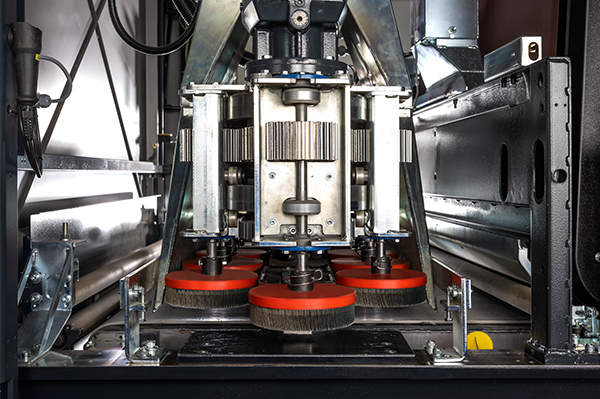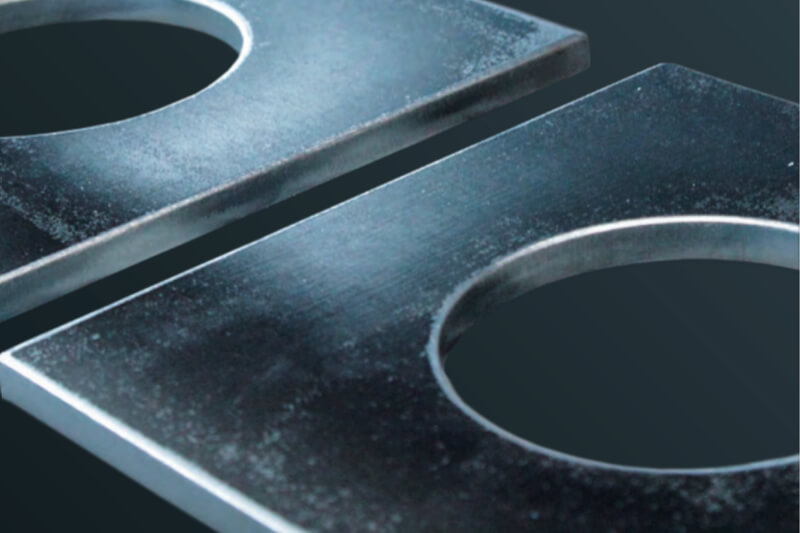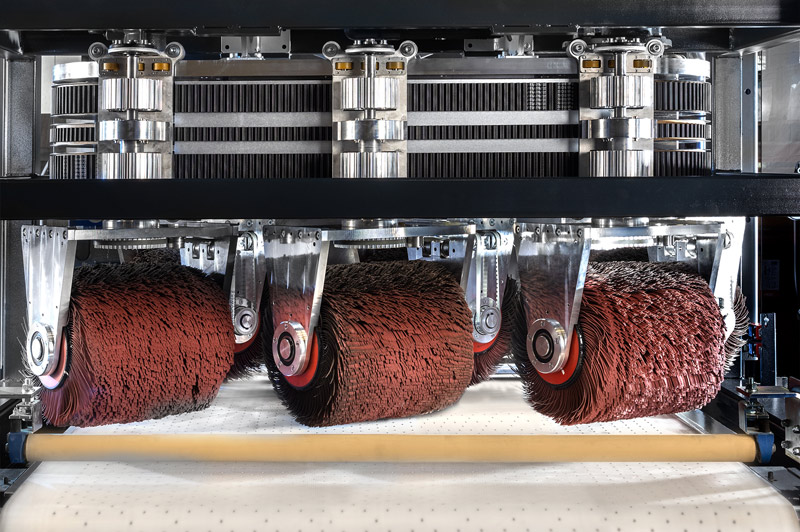KinematIQ – 100% even edge rounding with profiRounder machines
Deburring sheet metal parts is almost standard in the sheet metal fabrication industry today. Many of the technologies used on the market deburr the sheet metal and also produce a certain but not uniform edge rounding. And that is precisely what is often no longer sufficient today, because basically all edges should be of the same quality. Even edge rounding requires the right kinematics. The tools must reach all workpiece edges equally often and with the same intensity.

The challenge of 100% eveness in edge rounding
Creating a strong, but above all constant radius on all workpiece edges is a major technical challenge. This applies particularly to complex workpiece geometries. The tools used in the RUT and RUL units touch all parts edges equally often and evenly from all directions. This is possible due to the kinematics. The movement of the tools describes a “Lamesche” oval and the direction is changed outside of the work area. This avoids double intervention in some areas and too seldom intervention in others.
Other processes – e.g. cross brushing – have a preferred direction and always work more intensively on the edges that are aligned in the feed direction than on the transverse edges. The situation is similar with planetary heads, because all the brushes of a planetary head have the same direction of rotation.
Even machines with large rotors process parts that are placed on the outside of the conveyor belt more on the inlet and outlet side (transverse edges), while the longitudinal edges in the middle of the conveyor belt are processed more intense.
What are the advantages of even edge rounding?
Evenly rounded cutting edges with defined radii have several advantages: In systems that do not process all edges equally intensively, the edge with the weakest rounding must correspond to the specifications according to the technical specs / drawings. At the same time, however, this means that the more pronounced rounding at some other points was done without necessity – consequently, a waste of resources.
Exemplary: The drawing says – all edges deburred according to DIN 13715 | -0.2 mm to -0.5 mm. Assuming a cross brush reaches this -0.2 mm with a certain setting on the edges that are aligned parallel to the brush unit, then the edges that the brush hits directly are rounded significantly more. In practice, roundings of > -0.4 mm then occur here. This processing surpasses the drawing specification without need – only to reach -0.2 mm on the weakest processed edges.
The profiRounder has been consistently developed in such a way that even edge rounding is achieved on all edges and is therefore the most efficient machine on the market.


Intensive edge rounding
The RUL unit can do more than just even edge rounding – it can do extremely intensive edge rounding at the same time. The edges are rounded with 6 abrasive lamella brush rollers. The brushes rotate around both the horizontal and their vertical axis and are guided twice across the conveyor belt on a so called super-ellipse or “Lamesche”oval.
The Result: Absolute uniformity and, on request, radii of 2mm and more!


